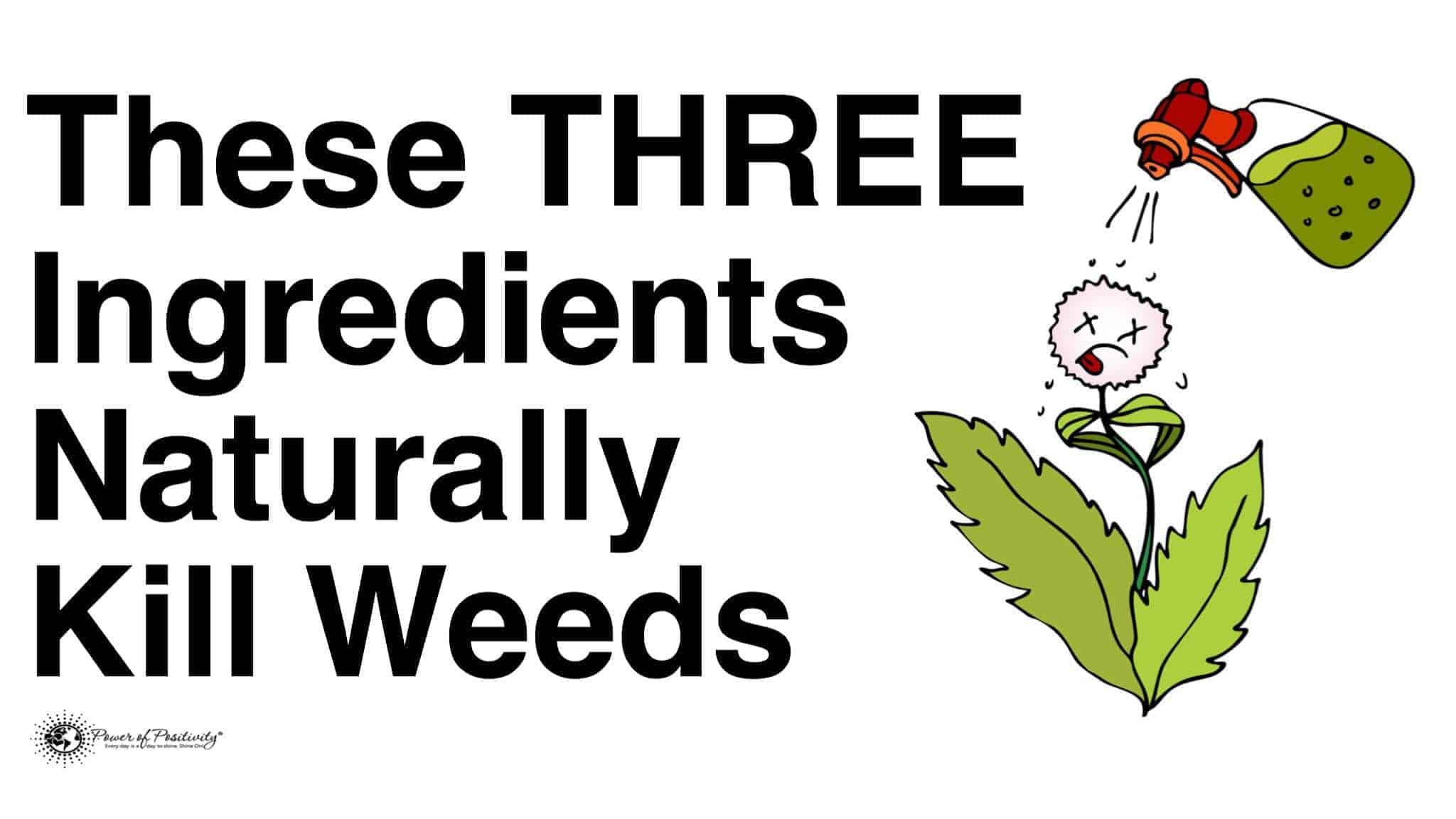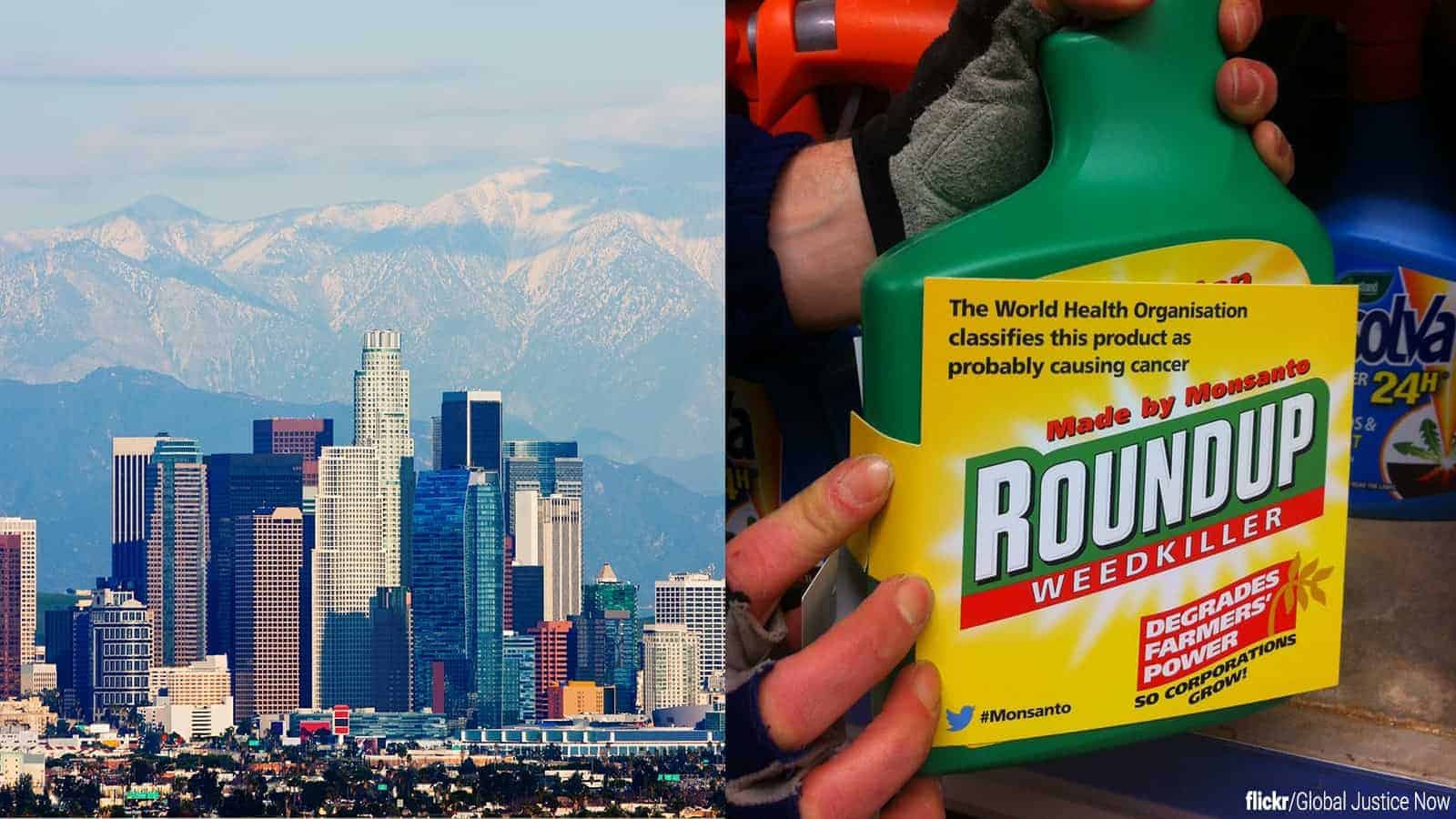On March 21, 2019, Los Angeles joined the list of 50+ cities and counties who have banned the use of Roundup, a widely used weed killer. Roundup contains the chemical glyphosate, which can cause cancer.
The World Health Organization’s International Agency for Research on Cancer had declared glyphosate a carcinogen in 2015. That decision was later countered in 2017 by the Environmental Protection Agency. The EPA issued a Summary Review of Recent Analysis of Glyphosate Use and Cancer Incidence in the Agricultural Health Study, in which it was reported glyphosate likely was not a carcinogen.
Despite this contradiction, Monsanto, the maker of Roundup, was held responsible by the second jury in 7 months who ruled in favor of glyphosate causing cancer. The first case was last year for a Dewayne Lee Johnson, who has non-Hodgkins lymphoma from exposure to the weed killer. The latest case was decided the same day L.A. chose to ban Roundup in a federal court in San Francisco. They ruled in favor of Edward Hardeman, also a cancer patient.
In an attempt to err on the side of caution, Los Angeles County Board of Supervisors passed a bill banning Roundup weed killer and its active ingredient, glyphosate, on county property until it can be determined decisively if it is a danger to public health and the environment.
Who is Monsanto?
Monsanto is an agricultural company that began in 2002 after it split from Pharmacia Corporation. Its focus was toward agricultural biotechnology with research aimed at improving farming by increasing profits through higher yields.
Monsanto has actually been around since 1901 when John F. Queeny created a company that could produce saccharine at 1/6th the price of sugar. He named the company after his wife, Olga Monsanto Queeny. In the 1940s, John Queeny’s son, Edward, took advantage of a chance to enter the agricultural industry. The first product he created was an insecticide called Santobane. Monsanto then expanded to provide fertilizer to farmers.
A chemist by the name of John Franz discovered a molecule that was later developed into glyphosate. In the 1970s, the first Roundup herbicide hit the market.
In 1983, scientists were able to successfully modify a plant cell using biotechnology. This led to the first genetically modified crops in 1987. Since then, this has been the foundation of Monsanto’s Company.
In June of 2018, Bayer company became the sole owner of Monsanto Company.
What is Glyphosate?
Glyphosate is one of the most used herbicides in the United States. There are over 750 products which contain it that are sold in the United States. It is applied to the broadleaf of plants and grasses in agriculture, forestry, lawn, gardens, and weeds in industrial areas.
Glyphosate comes in multiple forms, including as an acid and several types of salts. This allows it to be sold as either a solid or a liquid. The sodium salt form is used to regulate plant growth and ripen specific crops.
Glyphosate is a non-discriminatory herbicide in that it will kill most plants. It does this by preventing plants from making specific proteins that contribute to their growth. In the environment, glyphosate binds to the soil for up to 6 months and eventually is broken down by bacteria. Because of its ability to bind to the soil, it is unlikely to get into groundwater.
Studies Regarding Glyphosate
Animal and human studies were performed by agencies in the USA, Canada, Japan, Australia, and the European Union, as well as the Joint Meeting on Pesticides Residues of the United Nations and World Health Organization. All but the International Agency for Research on Cancer of the World Health Organization determined that glyphosate was non-toxic and non-carcinogenic to humans, including children, animals, or fish. Even in long term studies, there was no evidence of toxicity to the nervous or immune system. They also determined that it does not affect developmental or reproduction systems.
This is not to say that it is safe to be ingested, sprayed in the eyes or exposed to, as that is not how it is intended to be used. It can cause a variety of symptoms related to such contact, just as is the case with any household cleaner.
The Difference between Glyphosate and Roundup
While the World Health Organization has ruled glyphosate to “have a probability” of causing cancer, other agencies have determined that it does not. To be more specific, WHO has placed it on the carcinogenic level of a steak you may eat for dinner. Why has Roundup, the weed killer containing glyphosate, been banned pending further review?
Glyphosate has been broadly considered safe when on its own; this doesn’t mean it remains safe when combined with other chemicals. For comparison, baking soda on its own is just a white powder with no seemingly active properties, yet when you add vinegar, the baking soda foams up.
Deborah Kurrasch, a neuroscientist at the University of Calgary, is doing studies to determine if there is toxicity in glyphosate or in Roundup that has not been previously studied.
Result of Glyphosate Study
One of her experiments led them to question if glyphosate has an effect on mitochondrial function. She had exposed a zebrafish embryo to a low dose of glyphosate during a certain stage of development. It caused a related decrease in basal respiration which then impaired the movement of the larvae. She has also found evidence that at a high dose, glyphosate can reduce mitochondria function and sperm motility in zebrafish and alter neurotransmitter activity in the brains of rats.
Conversely, she ran a similar experiment on zebrafish using Roundup. She found that Round Up actually had the opposite effect of glyphosate. The fish moved more and basal respiration was higher. Essentially, it suggested that glyphosate created one reaction, while Roundup created the opposite or different reaction.
Missing Pieces of the Puzzle
Debrah Kurrasch and other scientists who are attempting to further study glyphosate and Round Up have run into the problem of not having a list of all ingredients used in Roundup. By law in the U.S. and Europe, a company is only required to list the active ingredients but not the “inert” ingredients. It’s like trying to make bread where the recipe only gave you flour, yeast, salt, and sugar, but left out the water and oil. The first ingredients given wouldn’t react to each other the same as having all the ingredients.
William Reeves, Chemistry Safety and Outreach lead at Monsanto, stated he was not surprised about the results of the studies. He claims the surfactants used in Roundup are similar to what is found in household products which cause membrane degradation and mitochondrial breakdown in high doses. He also states that the concentration of the herbicide is not as it would be in real life; that the herbicide concentration is far higher and not being used per instructions. While initially, that sounds like a cop-out, it is really just pointing out that all chemicals are designed for a specific function with certain cautions in place and a specific quantity to prevent any harm. This is much like when kids chose to swallow Tide Pods. They weren’t created for that purpose; therefore, there would be repercussions.
Differences of Opinion
Vanessa Fitsanakis, a neurotoxicologist at Northeast Ohio Medical University, has also been running her studies and considers it imperative to know all the ingredients in order to understand what is creating the results in various studies.
She states, “The scientists that I have spoken to from Monsanto and Syngenta are very convinced that the glyphosate by itself is nontoxic. I agree with them on that. Where I disagree . . . is that you can have an active ingredient that is nontoxic, but that does not mean that the commercial formulation is also nontoxic.”
Her statement alone explains why Los Angeles, and 50+ other cities and counties, have chosen to ban the use of Roundup until there is definite evidence that it does not cause cancer, other illnesses, or deformities to humans, animals, or fish. The study of glyphosate or glyphosate-based herbicides has only fairly recently been under inspection. Roundup has been out for 42 years and has only started to be investigated in the last 3-5 years. The United States EPA and Europe had different conclusions compared to the WHO. This difference of opinion only proves more studies should be done. As a part of these future studies, hopefully, there will be a release of all the chemicals used in the Roundup formulation. This will help provide the best evaluation possible.
In the interim, Los Angeles, California, has revealed a bill to ban the use of Roundup weed killer. They will look into other alternatives for controlling weeds and other plants.

Final thoughts
If you want to kill weeds in your own yard, there are natural alternatives to weed killers such as Roundup. It’s yet to be determined if light exposure to the chemicals in the weed killer can cause health problems; in our opinion, it’s better to be safe than sorry.

















